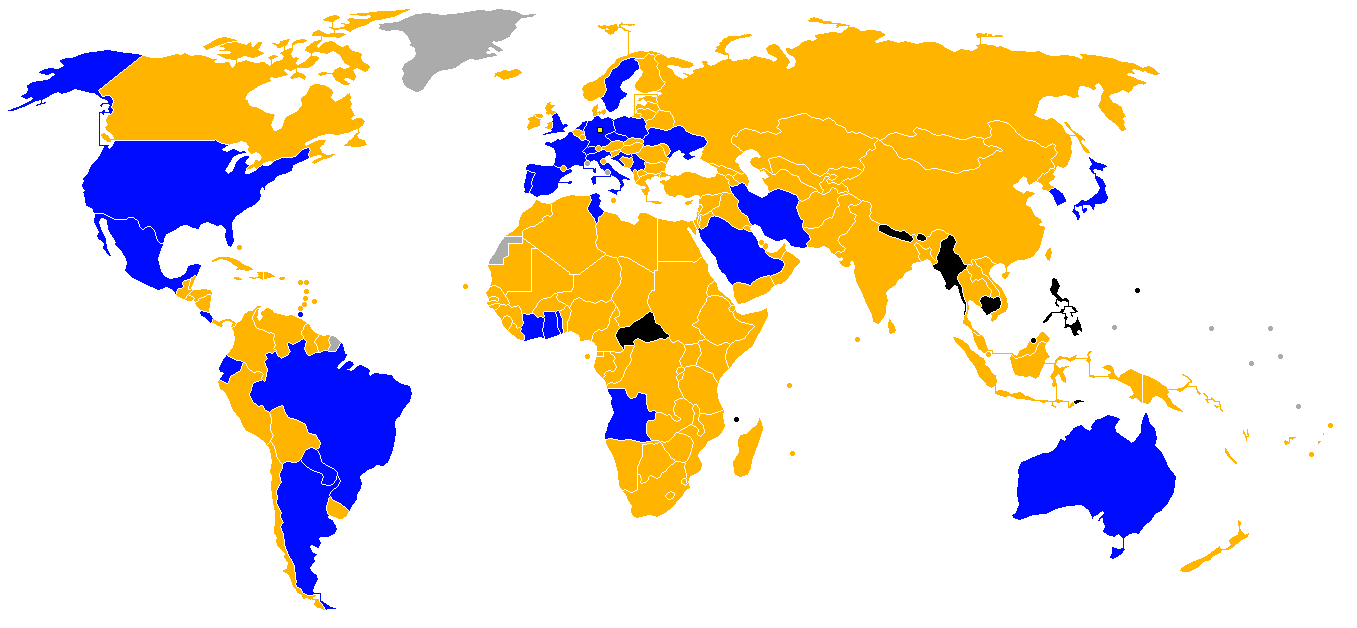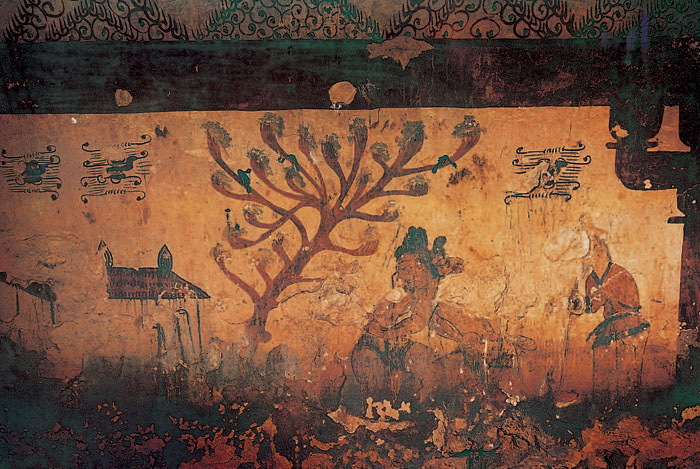|
X-Man (TV Series)
''X-Man'' () was a popular South Korean game show which ran from November 8, 2003 to April 8, 2007 on SBS. Its popularity peaked from 2004 to 2006. It was hosted by Yoo Jae-suk, Kang Ho-dong, Kim Je-dong, with Kim being successively replaced by Gong Hyung-jin, Park Kyung-lim, and Lee Hyuk-jae; only the first two were on the program since its inception. ''X-man'' was loosely based on '' The Mole''. History The program first aired on November 8, 2003 as a "Genuine Psychological Reasoning Variety", ''Real Situation: Finding X-man'' (실제상황 X맨을 찾아라), a corner program of '' Real Situation Saturday''. On October 10, 2004, the program was moved to ''Good Sunday'' and simply known as ''X-man''. On November 5, 2006, the program became the sole program airing in ''Good Sunday'' and was officially known as ''X-man Good Sunday'' airing until April 8, 2007. Real Situation Saturday era In the first season of the program, the main host was Kim Je-dong, with team leaders ... [...More Info...] [...Related Items...] OR: [Wikipedia] [Google] [Baidu] |
Game Show
A game show is a genre of broadcast viewing entertainment (radio, television, internet, stage or other) where contestants compete for a reward. These programs can either be participatory or Let's Play, demonstrative and are typically directed by a game show host, host, sharing the rules of the program as well as commentating and narrating where necessary. The history of game shows dates back to the invention of television as a medium. On most game shows, contestants either have to answer questions or solve puzzles, typically to win either money or prizes. Game shows often reward players with prizes such as cash, trips and goods and services provided by the show's sponsor. History 1930s–1950s Game shows began to appear on radio and television in the late 1930s. The first television game show, ''Spelling Bee (game show), Spelling Bee'', as well as the first radio game show, ''Information Please'', were both broadcast in 1938; the first major success in the game show genre was ... [...More Info...] [...Related Items...] OR: [Wikipedia] [Google] [Baidu] |
Korean Broadcasting System
The Korean Broadcasting System (KBS) () is the national broadcaster of South Korea. Founded in February 1927, it is one of the leading South Korean television and radio broadcasters. KBS operates seven radio networks, ten television channels, and multiple Internet-exclusive services. Its flagship terrestrial television stations KBS1 broadcasts on channel 9, while KBS1 sister channel KBS2, an entertainment oriented network, broadcasts on channel 7. KBS also operates the international service KBS World, which provides television, radio, and online services in twelve different languages. History Early radio broadcasts The KBS began as Keijo Broadcasting Station (경성방송국, 京城放送局) with call sign JODK, established by the Governor-General of Korea on 16 February 1927. It became the in 1932. After Korea was liberated from Japanese rule at the end of World War II, this second radio station started using the call sign HLKA in 1947 after the Republic of Korea was grant ... [...More Info...] [...Related Items...] OR: [Wikipedia] [Google] [Baidu] |
2006 FIFA World Cup
The 2006 FIFA World Cup, also branded as Germany 2006, was the 18th FIFA World Cup, the quadrennial international football world championship tournament. It was held from 9 June to 9 July 2006 in Germany, which had won the right to host the event in July 2000. Teams representing 198 national football associations from all six populated continents participated in the qualification process which began in September 2003. Thirty-one teams qualified from this process along with hosts Germany for the finals tournament. It was the second time that Germany staged the competition and the first as a unified country along with the former East Germany with Leipzig as a host city (the other was in 1974 in West Germany), and the 10th time that the tournament was held in Europe. Italy won the tournament, claiming their fourth World Cup title, defeating France 5–3 in a penalty shoot-out in the final after extra time had finished in a 1–1 draw. Germany defeated Portugal 3–1 to finis ... [...More Info...] [...Related Items...] OR: [Wikipedia] [Google] [Baidu] |
Arm Wrestle
Arm wrestling (also spelled armwrestling) is a sport with two opponents who face each other with their bent elbows placed on a table and hands firmly gripped, who then attempt to force the opponent's hand down to the table top ("pin" them). The sport is often casually used to demonstrate the stronger person between two or more people. In the early years other names were used to describe the same sport, including arm turning, arm twisting, twisting wrists, wrist turning and wrist wrestling. History Current knowledge of the history of arm wrestling is based on written and pictorial evidentiary sources, and arm wrestling may have existed in any number of ancient or medieval cultures that did not record it. Popular claims that it was practiced in ancient Egypt or ancient Greece, while not necessarily implausible, are founded on misinterpretation of sources (confusing references to wrestling with the arms or images of wrestling with the hands or of dancing for arm wrestling). Arm wr ... [...More Info...] [...Related Items...] OR: [Wikipedia] [Google] [Baidu] |
Stocking
Stockings (also known as hose, especially in a historical context) are close-fitting, variously elastic garments covering the leg from the foot up to the knee or possibly part or all of the thigh. Stockings vary in color, design, and transparency. Today, stockings are primarily worn for fashion and aesthetics, usually in association with mid-length or short skirts. History Historically, even though the word ''sock'' is at least as ancient in origin, what men normally wore were often referred to as stockings, probably especially when referring to longer hose. The word ''stock'' used to refer to the bottom "stump" part of the body, and by analogy the word was used to refer to the one-piece covering of the lower trunk and limbs of the 15th century—essentially tights consisting of the ''upper-stocks'' (later to be worn separately as knee breeches) and ''nether-stocks'' (later to be worn separately as ''stockings''). (See Hose.) Before the 1590s, stockings were made of woven cl ... [...More Info...] [...Related Items...] OR: [Wikipedia] [Google] [Baidu] |
Ssireum
''Ssireum'' (Hangul: ) or Korean wrestling is a folk wrestling style and traditional national sport of Korea that began in the fourth century. In the modern form each contestant wears only a belt (satba) that wraps around the waist and the thigh. The competition employs a series of techniques, which inflict little harm or injury to the opponent: opponents lock on to each other's belt, and one achieves victory by bringing any part of the opponent's body above the knee to the ground. Etymology There have been other terms for "wrestling" in Korean used alongside ''ssireum'', such as ''gakjeo'' (각저:角抵), ''gakhui'' (각희:角戱), ''gakryeok'' (각력:角力), ''gakji'' (각지:角支), ''chiuhui'' (치우희:蚩尤戱), ''sangbak'' (상박:相撲), ''jaenggyo'' (쟁교:爭交). ''Gak'' (각:角), a commonly used prefix, seems to have originated from the combative act performed by horned animals such as oxen when competing against one another for the superiority of phy ... [...More Info...] [...Related Items...] OR: [Wikipedia] [Google] [Baidu] |
Gomusin
''Gomusin'' () are shoes made of rubber in a form of Korean traditional shoes. The shoes are wide, with low heels. Gomusin for men were modeled after "''gatsin''" (갖신), and ones for women were ''danghye'' (당혜). Gomusin first appeared in the early 20th century. They were much easier to keep clean than ''danghye'' and jipsin (straw shoes) and they could be worn when it rains. Therefore, gomusin gained a popularity and replaced traditional shoes. History It is purported that the first man to wear gomusin was Sunjong of Korea, the last emperor of Korean Empire, Joseon. From 1938 to 1945, the Korea under Japanese rule, Japanese colonial régime restricted the wearing of national dress including gomusin. From 1945 to the end of the Korean War the now legalized shoes became very popular. After 1960, while the manufacture of gomusin became more sophisticated and more appealing styles were able to proliferate, gomusin became less common in everyday dress. Gomusins are made by mi ... [...More Info...] [...Related Items...] OR: [Wikipedia] [Google] [Baidu] |
Hula Hoop
A hula hoop is a toy hoop that is twirled around the waist, limbs or neck. It can also be wheeled along the ground like a wheel, with careful execution. They have been used by children and adults since at least 500 BC. The modern hula hoop was inspired by Australian bamboo hoops. Common lore posits the creators of the plastic hoop popularised in the US witnessed Australian children playing with bamboo hoops while driving past in an automobile. The new plastic version was popularized in 1958 by the Wham-O toy company and became a fad. Hula hoops for children generally measure approximately in diameter, while those for adults measure around . Traditional materials for hoops include willow, rattan (a flexible and strong vine), grapevines and stiff grasses. Commercial hoops are usually made of plastic tubing. Origins Native American Hoop Dance is a form of storytelling dance incorporating hoops as props. These props are used to create both static and dynamic shapes, which repr ... [...More Info...] [...Related Items...] OR: [Wikipedia] [Google] [Baidu] |
High Jump
The high jump is a track and field event in which competitors must jump unaided over a horizontal bar placed at measured heights without dislodging it. In its modern, most-practiced format, a bar is placed between two standards with a crash mat for landing. Since ancient times, competitors have introduced increasingly effective techniques to arrive at the current form, and the current universally preferred method is the Fosbury Flop, in which athletes run towards the bar and leap head first with their back to the bar. The discipline is, alongside the pole vault, one of two vertical clearance events in the Olympic athletics program. It is contested at the World Championships in Athletics and the World Athletics Indoor Championships, and is a common occurrence at track and field meets. The high jump was among the first events deemed acceptable for women, having been held at the 1928 Olympic Games. Javier Sotomayor (Cuba) is the current men's record holder with a jump of set in 1 ... [...More Info...] [...Related Items...] OR: [Wikipedia] [Google] [Baidu] |
Balance Beam
The balance beam is a rectangular artistic gymnastics apparatus and an event performed using the apparatus. Both the apparatus and the event are sometimes simply referred to as "beam". The English abbreviation for the event in gymnastics scoring is BB. The beam is a small, thin beam which is typically raised from the floor on a leg or stand at both ends. The balance beam is only performed competitively by female gymnasts. Beams are usually covered with leather-like material and are only four inches wide. Balance beams used in international gymnastics competitions must conform to the guidelines and specifications set forth by the International Gymnastics Federation ''Apparatus Norms'' brochure. Several companies manufacture and sell beams, including AAI (USA), Janssen Fritsen (Europe) and Acromat (Australia). Most gymnastics schools purchase and use balance beams that meet the FIG's standards, but some may also use beams with carpeted surfaces for practice situations. While learning ... [...More Info...] [...Related Items...] OR: [Wikipedia] [Google] [Baidu] |
Sumo Wrestler
A , or, more colloquially, , is a professional sumo wrestler. follow and live by the centuries-old rules of the sumo profession, with most coming from Japan, the only country where sumo is practiced professionally. Participation in official tournaments () is the only means of marking achievement in sumo, with the rank of an individual based solely on official wins. The number of active peaked at 943 in May 1994, at the height of the "Waka-Taka boom," but had declined to 665 by January 2022. Terminology In popular use, the term can mean any sumo wrestler and be an alternative term to (sumo practitioner) or the more colloquial . The two kanji characters that make up the word are "strength/power" and "gentleman/samurai"; consequently, and more idiomatically, the term can be defined as "a gentleman of strength". Within the world of professional sumo, is used as a catch-all term for wrestlers who are in the lower, un-salaried divisions of , , and . The more prestigious ... [...More Info...] [...Related Items...] OR: [Wikipedia] [Google] [Baidu] |
Chicken Fight
Chicken fight, also known as shoulder wars, is an informal game, often played in a lake or swimming pool, characterized by one team member sitting on the shoulders of his or her teammate or riding piggy-back. The object of the game is to knock down or separate an opposing team through team effort. The person on top is considered to be the "attacker" while the person below is considered to be the "vehicle". The person below may not use arms or hands and must rely on momentum to attack by running into the other team. The person on his/her shoulders is the "attacker" and may use any means possible of separating the other team or knocking them to the ground. If a team is separated or knocked down in any way, they are required to resign from the game and the last team to remain together is considered the winner. It is not uncommon for this game to be banned in swimming pools due to safety concerns. A similar Japanese game called is commonly played as part of an annual sports day eve ... [...More Info...] [...Related Items...] OR: [Wikipedia] [Google] [Baidu] |

_한국방송공사_(5481447848).jpg)






